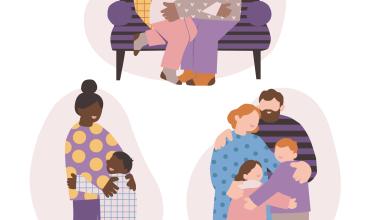A refugee is a person who has fled their own country because they are at risk of serious human rights violations and persecution there. They are unable to return and are in need of protection. To meet this need, Canada set up two refugee protection programs:
- the In-Canada Asylum Program, for people making refugee protection claims from within Canada
- the Refugee and Humanitarian Resettlement Program, for people who need protection from outside Canada
The In-Canada Asylum Program
People arriving in Canada or who are already in Canada can apply for refugee protection by making a refugee claim to the Immigration and Refugee Board of Canada (IRB). The IRB is an independent administrative tribunal which decides if the claimant qualifies for refugee protection.
In order to do so, they will hear the case and make a decision according to the two categories of protected people:
- Convention Refugee: according to the 1951 Geneva Convention Relating to the Status of Refugees, a Convention refugee is someone who:
- has a well-founded fear of being persecuted for reasons of race, religion, nationality, membership of a particular social group or political opinion
- is outside of their country of nationality
- is unable or unwilling to return to their country of nationality
- Person in need of protection: a person who faces danger of torture, risk to their life or risk of cruel and unusual treatment or punishment if they return to their home country
If the IRB finds that the claimant meets the criterias of one of these two categories, they will receive “protected person” status. Then they can apply for permanent residence.
If the IRB rejects the case, they usually can appeal to the Refugee Appeal Division (RAD).
For more information on making a claim from within Canada, you can read How is a refugee claim decision made?
People who are seeking entry to Canada from the United States usually cannot make a refugee claim. For more information, please read about the Canada - US Safe Country Agreement.
People who are outside of Canada cannot make a refugee claim. However, they can be eligible to the Refugee and Humanitarian Resettlement Program.
The Refugee and Humanitarian Resettlement Program
The purpose of the Refugee Resettlement Program is to help refugees who are outside of Canada and their country of origin, and who are in need of protection.
People who are already in Canada cannot be part of this program.
People must be referred, either by the United Nations Refugee Agency (UNHCR), a designated referral organization, or a private sponsorship group. In some cases, they might need to have a refugee status document.
Two categories of refugees can be referred for resettlement in Canada:
- the Convention refugee abroad class, for people who meet the criterias from the Geneva Convention (are outside their home country, cannot return there due to a well-founded fear of persecution based on race, religion, political opinion, nationality, or membership in a particular social group);
- the country of asylum class, which include people who:
- are outside their home country, or the country where they normally live, and
- have been seriously affected by civil war or armed conflict, or
- have been denied basic human rights on an ongoing basis
Refugees can be resettled in Canada via different resettlement programs. The main difference between these programs is the breakdown of the financial and non-financial support from the government of Canada and private sponsors.
These programs fit into three categories:
- the Government-Assisted Refugees Program, in which the support is the full responsibility of the government of Canada;
- programs in which the support is shared by both the government and private sponsors (Blended Visa Office-Referred Program, Joint Assistance Program, Rainbow Refugee Assistance Partnership);
- the Private Sponsorship of Refugees Program, in which the support is the full responsibility of the private sponsors.

